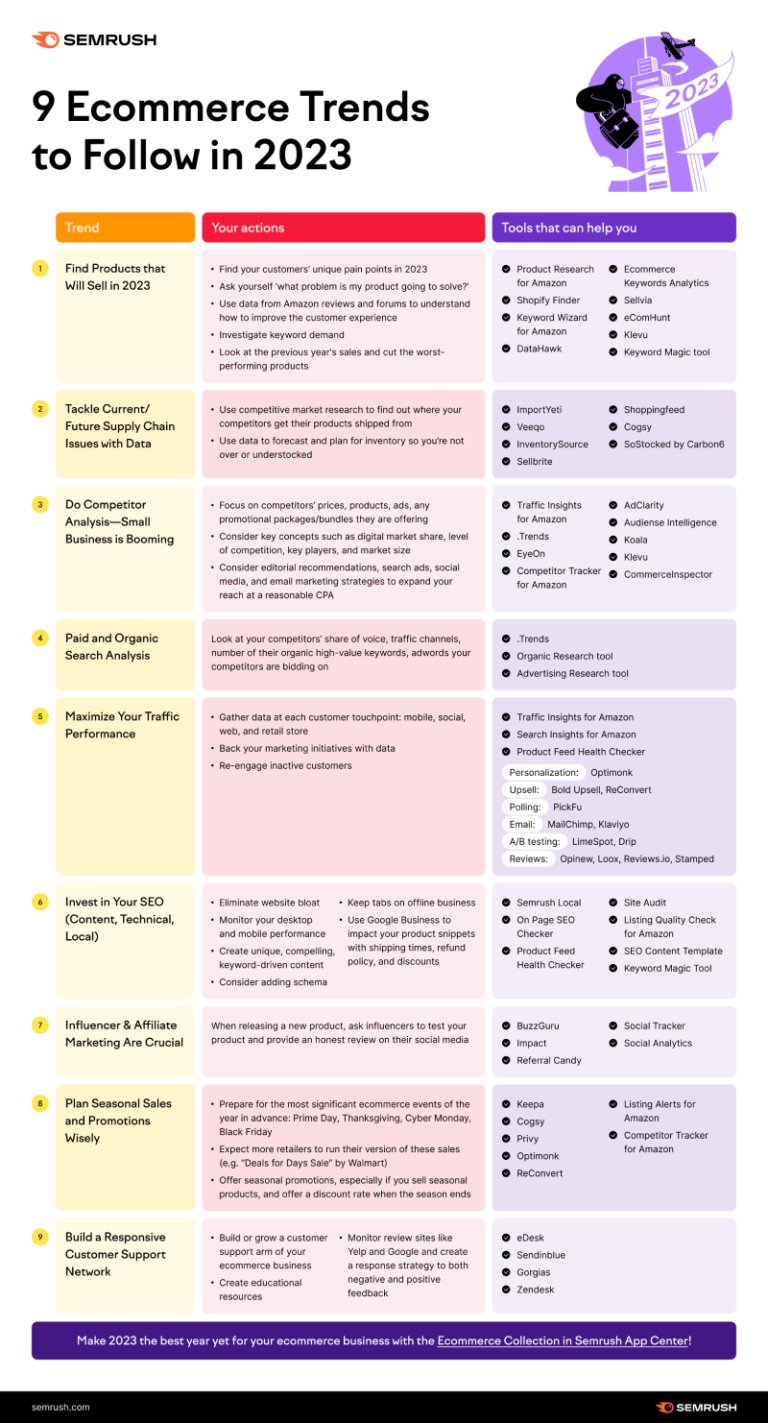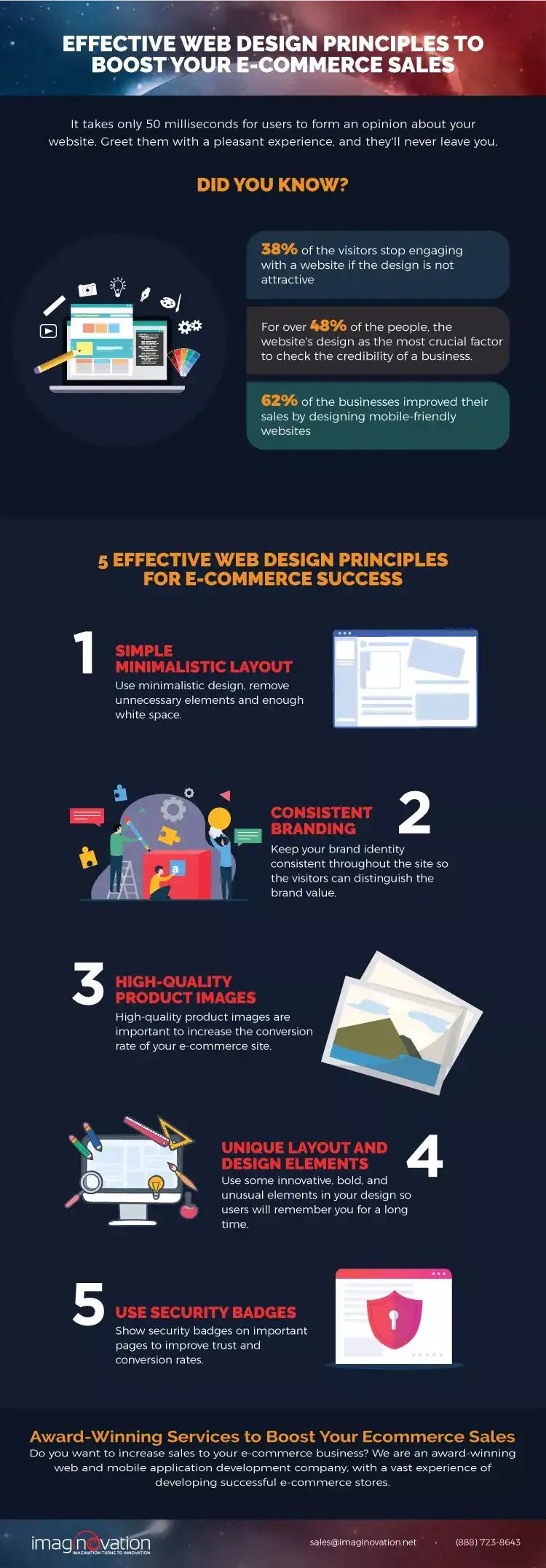Ecommerce has revolutionized the way we shop, and the competition among online stores is fierce. To succeed in this environment, ecommerce website owners need to prioritize effective website design that enhances online sales. In this blog, we'll explore the principles...
In 2023: Overcoming E-commerce Challenges with Essential Tools
In 2023: Overcoming E-commerce Challenges with Essential Tools
Introduction: E-commerce has been on the rise for the past few years, and it’s expected to continue its growth trajectory in 2023. With the increasing demand for online shopping, e-commerce businesses are likely to face various challenges. However, these challenges can be overcome with the use of essential tools. In this blog, we will explore some of the most common e-commerce challenges and how to overcome them with the help of essential tools.
Challenge #1: Increasing competition With the growth of e-commerce, the competition is also increasing. In 2023, we can expect to see more businesses entering the e-commerce space. This means that e-commerce businesses will need to work harder to stand out in the crowded marketplace. One way to overcome this challenge is to use search engine optimization (SEO) tools. These tools help businesses optimize their website and product pages for search engines, making it easier for potential customers to find them.
Challenge #2: Providing a seamless customer experience In the world of e-commerce, customer experience is everything. With so many options available to consumers, businesses need to provide a seamless and enjoyable shopping experience to retain customers. One way to achieve this is by using customer relationship management (CRM) tools. These tools help businesses manage their customer interactions, ensuring that they are providing a personalized and responsive experience.
Challenge #3: Managing inventory and shipping Inventory management and shipping can be a significant challenge for e-commerce businesses. In 2023, we can expect to see an increase in demand for faster and more efficient shipping options. To overcome this challenge, businesses can use inventory management and shipping tools. These tools help businesses track their inventory levels, manage their orders, and ensure that they are delivering products to customers on time.
Challenge #4: Securing transactions As the volume of online transactions increases, so does the risk of fraud and cyberattacks. E-commerce businesses need to take steps to protect their customers’ information and ensure that their transactions are secure. One way to do this is by using payment processing and security tools. These tools help businesses securely process payments, protect customer information, and detect and prevent fraud.
Challenge #5: Understanding and analyzing data In 2023, data will continue to be a crucial aspect of e-commerce. Businesses need to be able to understand and analyze data to make informed decisions and improve their performance. One way to do this is by using analytics and data visualization tools. These tools help businesses track their performance, identify trends, and make data-driven decisions.
Conclusion: E-commerce businesses will face various challenges in 2023, but these challenges can be overcome with the help of essential tools. SEO tools can help businesses stand out in a crowded marketplace, while CRM tools can ensure a seamless customer experience. Inventory management and shipping tools can help businesses efficiently manage their operations, while payment processing and security tools can protect transactions. Finally, analytics and data visualization tools can help businesses make informed decisions and improve their performance. By using these essential tools, e-commerce businesses can thrive in 2023 and beyond.

Recent Blog
Principles of Ecommerce Website Design to Enhance Online Sales
Why Ecommerce Website Owners Should Consider Hosting a Popup Shop Occasionally
In today's world of online shopping, ecommerce website owners are constantly seeking new and innovative ways to attract and retain customers. One strategy that has gained popularity in recent years is hosting a popup shop. A popup shop is a temporary retail space that...
Important Statistics and Facts on Ecommerce Optimization Every Online Shop Owner Must be Aware Of
In today's digital age, ecommerce has become a crucial aspect of every business. With the rise of online shopping, it is important for every online shop owner to optimize their ecommerce website to ensure a smooth and efficient shopping experience for their customers....
Ecommerce Marketing Strategy Guide
Ecommerce has revolutionized the way businesses sell their products and services, making it possible for anyone to start an online store and reach customers all over the world. However, with the increasing competition, it is becoming harder to stand out in the online...
Easy Ways to Initiate a Social Media Plan for Your Business
In today's digital age, social media has become a crucial part of any business's marketing strategy. With the right social media plan, businesses can reach their target audience, build brand awareness, and even drive sales. However, starting a social media plan can be...
Efficient and Easy Pointers to Launch Your Social Media Plan in 2023
In today's digital world, social media has become an essential tool for businesses to connect with their target audience and promote their brand. As we enter 2023, it's important to have a social media strategy that can help you stand out in the crowded online space....
Hashtags for Daily Exposure to Reach a Fresh Social Media Audience
Social media is an essential component of any business's marketing strategy in the digital age. With billions of people using social media platforms every day, it's no wonder that businesses of all sizes are vying for their attention. However, with so many businesses...
4 Ways to Enhance Your Marketing Strategy through User-Generated Content Advantages
In today's digital age, user-generated content (UGC) has become a powerful tool for marketers looking to enhance their marketing strategies. UGC refers to any content created by users or customers that promotes a brand, product, or service. This content can take many...
15 Inspiring Ideas for Creative Blog Posts Your Readers Will Absolutely Adore
Are you struggling to come up with creative ideas for your blog posts? Do you want to keep your readers engaged and interested in your content? If so, you're in luck! In this post, we'll explore 15 inspiring ideas for creative blog posts that your readers will...
Designing a Landing Page for Your Website That Converts at a High Rate: Tips and Strategies
When it comes to online marketing, one of the most critical factors in converting website visitors into customers is having a high-converting landing page. A landing page is a standalone web page created specifically for a marketing or advertising campaign with a...





